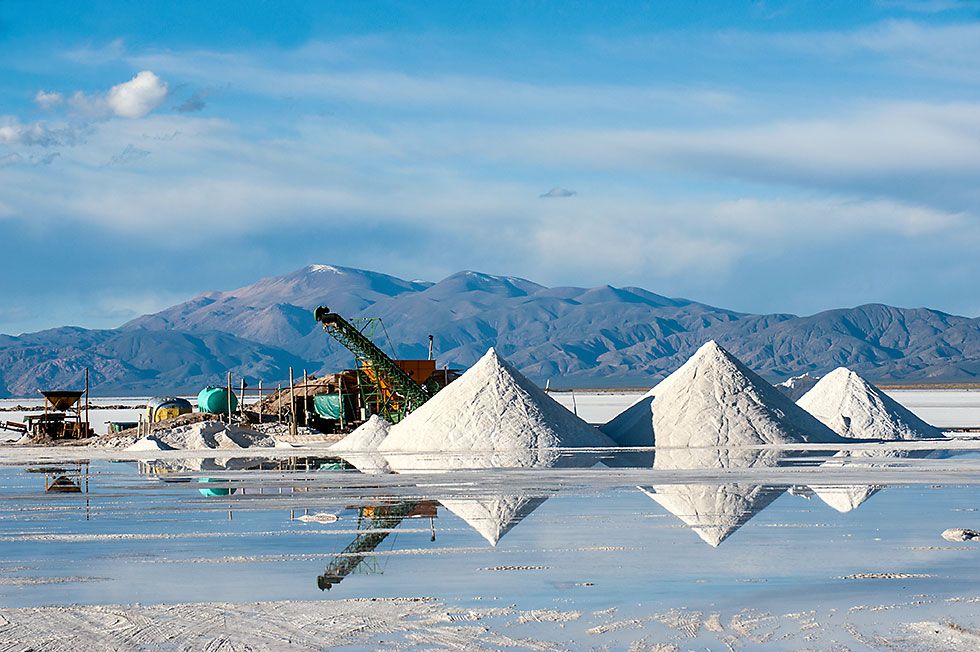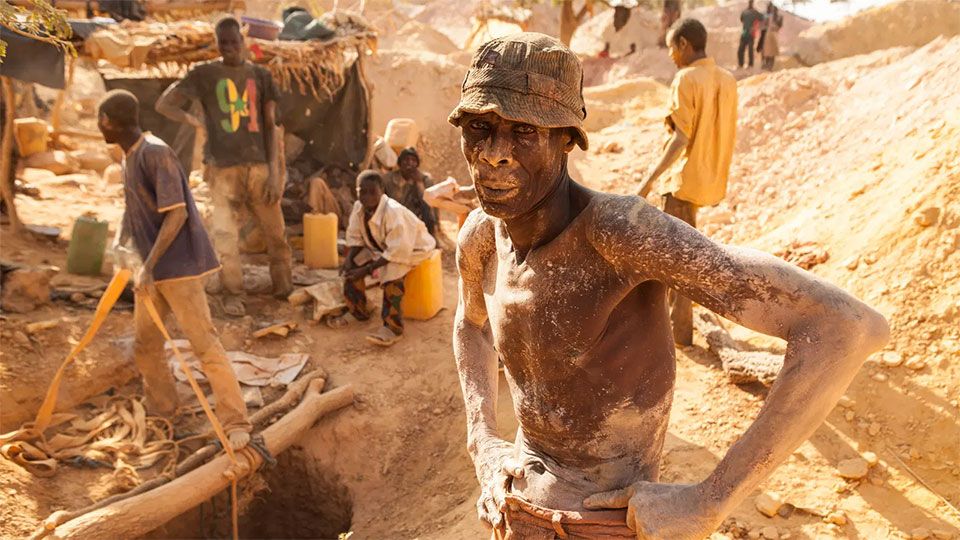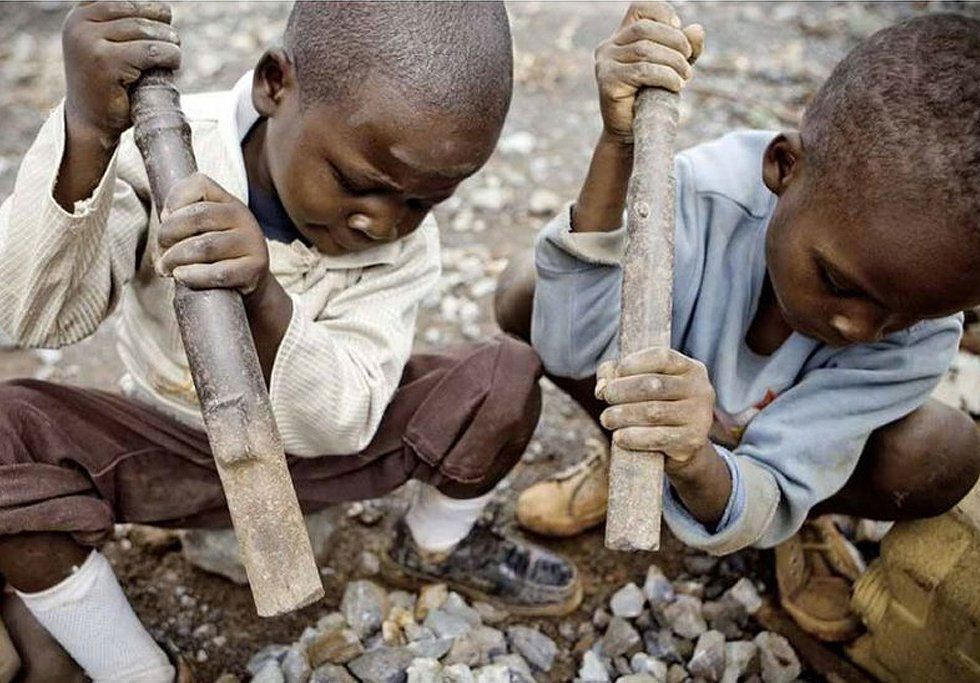The massive environmental cost of batteries


As a global unit, we are having to sit up and take notice of the pervasive environmental cost of our civilisation and rapidly growing industrial-economic enterprise. In the last few years, there has been a huge push towards “green” sources of energy. As we move towards a future with lower carbon dependence, batteries have emerged as the go-to power solution. Although touted as a powerful means to combat climate change, sourcing the raw materials required to make these batteries is proving to have massive environmental and humanitarian challenges.
We are realising, now more than ever, that we are perilously close to an irreversible ecological catastrophe. Throughout the world, there is an ever-growing consensus that the environmental impact of human activity is not to be dismissed. In 2015, leaders from 195 nations of the world met in Paris and signed the “Paris agreement” which was aimed at setting up an international framework to limit global warming. The signatories were tasked with cutting down their emissions and so far, most countries are failing. In fact, not only are many of the signatory countries failing to meet their emission targets, but some of the largest offenders will continue to have increasing emissions in the years to come, according to climate scientists.
In this fight against carbon-based fossil fuels, Lithium-ion batteries have emerged as the leading power alternative. The last decade has seen an explosion in the demand for lithium. Lithium has gone from being a bit player in the manufacture of mobile electronics to being an indispensable commodity in our bid to decarbonise the world and reduce emissions of greenhouse gases. In particular, the automotive and energy industries have fueled this massive demand for lithium batteries to a large extent. The lithium business is booming and just last week (June 2020), delegates from all over the world met in Chile (which has the world’s largest lithium deposits) to discuss the latest happenings in the industry.
The lithium-ion battery has become the technology of choice for electric vehicles, e-bikes, and mobile devices. Moreover, lithium-ion batteries are also increasingly being preferred for energy storage solutions, which are likely to take up even more prominence as we move from fossil fuels to more sustainable, but unreliable, means of energy production, such as wind or solar. However, acquiring raw materials for and producing these lithium-ion batteries may themselves prove to have serious environmental implications.
There are a number of ethical, environmental and health concerns that are being linked to the production of Lithium-ion batteries. The reality of the matter is that we might have exchanged one enemy for another. Despite enabling a move away from fossil fuels and the associated dangers of a carbon-dependent world, lithium-ion batteries might themselves not be the white knights that they are often made out to be.
Lithium-ion batteries have become ubiquitous around us. They power a lot of the devices that have come to become essential to many of us and this trend is unlikely to change anytime soon. Lithium supply is set to grow rapidly with experts predicting that it is going to triple by the year 2025.
What’s the problem with batteries?
Batteries are an indispensable part of our modern lives and have been for a while. They are cheap and convenient and find application in hundreds of scenarios in our everyday life. However, the main problem with batteries is a really obvious one - they run out!
It is estimated that Americans throw away upwards of 3 billion batteries a year! Take a minute to wrap your head around that!
Disposal is a massive issue with single-use batteries. And it’s not just a problem of quantity either. The materials contained in batteries are hazardous and can potentially wreak havoc on the ecosystem.
But wait a minute, wasn’t this the very problem that rechargeable batteries were meant to address?
The lithium-ion battery - not the saviour that was promised?
Make no mistake - the lithium-ion battery was a revolutionary leap forward. The main problem with lead-acid and nickel-cadmium batteries was that they ran out quickly and had to be discarded. Additionally, these substances were extremely toxic and therefore, disposal was a big challenge.
“One of the biggest environmental problems caused by our endless hunger for the latest and smartest devices is a growing mineral crisis, particularly those needed to make our batteries”
After all, it was not for nothing that in 2019, the scientist trio of John B Goodenough, M Stanley Whittingham, and Akira Yoshino was awarded the Nobel Prize in Chemistry, for their contributions to the development of the modern lithium-ion battery.
It was all the way back in the 70’s, during the global oil crisis, that British-American chemist M Stanley Whittingham laid the foundation for the lithium-ion battery. He was working on developing energy technologies that were not based on fossil fuels. His first working device could only put out a little over 2 Volts. However, John B Goodenough then came upon the idea of using cobalt oxide to boost the battery’s output to 4 Volts, in 1980. It was only half a decade later, that Akira Yoshino created the first commercially viable lithium-ion battery, which then took a further six years to come to market, with Sony releasing it in 1991.
The lithium-ion battery is arguably the single largest enabler of mobile technology. They power mobile phones and portable computing devices that we have come to take for granted. Add to this the skyrocketing demand for electric cars and power storage, you start to understand why lithium is being mined so frantically. According to Cairn Energy Research Advisors, which is a consultancy firm, the lithium-ion industry is set to grow 10 times, in terms of total power output, between 2017 and 2027! There has been a massive increase in the number of lithium extraction projects and hundreds more are being discussed.
However, lithium-ion batteries may not be the best “green” solution for us in the long run. The environmental costs associated with finding enough lithium seem to pose a huge question mark to us.
Christina Valimaki who is an analyst at Elsevier says, “One of the biggest environmental problems caused by our endless hunger for the latest and smartest devices is a growing mineral crisis, particularly those needed to make our batteries”
The uglier side of lithium-ion batteries
Many governments and local bodies around the world are promoting lithium-ion batteries as the harbingers of a greener future. However, the dangers associated with lithium production are manifold and not at all trivial.
First of all, there’s the massive resource cost of mining lithium. Let’s take South America as an example. South America’s “Lithium Triangle”, which is spread across the three nations of Argentina, Chile and Bolivia, is home to more than 50% of the globe’s lithium deposits. These reserves are located under extremely dry salt flats. These are some of the driest places on the planet. This is a huge problem because in order to extract lithium, the salt flats have to be drilled and this pumps huge amounts of mineral-rich saltwater out onto the surface.

This is then allowed to evaporate on the surface for months, resulting in a mixture of salts, from which lithium carbonate or white gold can be extracted, after about 12-18 months. Although it is time-consuming, this is a rather cheap and straightforward process. However, it uses exorbitant amounts of water. Approximately half a million gallons of water is required per tonne of lithium that is produced. In some parts of South America (eg. Chile’s Salar de Atacama), mining activities take up about 65% of the region’s water supply. This has a severely detrimental impact on the local farmers, many of whom already have to source water from distant sources.
Lithium extraction has disastrous consequences on the soil and air of the surrounding environment.
Guillermo Gonzalez, an expert on lithium batteries from the University of Chile sums it up succinctly, - “Like any mining process, it is invasive, it scars the landscape, it destroys the water table and it pollutes the earth and the local wells; This isn’t a green solution – it’s not a solution at all.”
In 2016, The Chinese town of Tagong witnessed the destructive side of lithium mining, first hand. A toxic chemical leak from a nearby lithium mine utterly destroyed the local ecosystem. The stream was filled with dead fish and animal carcasses. This was not a one-off either - there have been many such instances in recent years.
Serious health risks
Lithium-ion batteries contain an entire host of toxic substances and recent studies link them to some terrible health risks.
A study conducted by the Institute of NBC Defence and Tsinghua University in China, found that lithium-ion batteries, which are used in literally billions of consumer devices worldwide, can release a variety of dangerous gases when overheated.
The lead author of the study Dr. Jie Sun remarks,
“Nowadays, lithium-ion batteries are being actively promoted by many governments all over the world as a viable energy solution to power everything from electric vehicles to mobile devices. The lithium-ion battery is used by millions of families, so it is imperative that the general public understand the risks behind this energy source,”
There have been several notable instances of electronics manufacturers having to recall their products after battery heating issues (most notably, Samsung).
Cobalt crisis in congo

Lithium batteries, in addition to lithium, use cobalt and nickel as key ingredients. The giant global push towards large scale adoption of electric vehicles is in danger of creating a supply bottleneck and potentially leading to ecological disaster.
Cobalt, for all practical purposes, is only found in the Democratic Republic of Congo (DRC) and a few other parts of Central Africa. And it is expensive! In just the last two years, the price of Cobalt has quadrupled!
First, there are the destructive sequelae of cobalt mining on the environment and living organisms. Then, there is the untold amount of human suffering that cobalt mining causes.
Most of the world’s cobalt production happens in the Katanga Copperbelt of the Congo. In addition to the large industrial operations, the skyrocketing demand for cobalt has led to the proliferation of so-called artisanal mines, where toxic minerals like cobalt and nickel are extracted by child-miners using their bare hands!

In a nutshell, the problem is this - Cobalt, dubbed the hottest commodity of 2017, is essential to meet our ever increasing demand for electronics like phones and computers. Significant amounts of cobalt are mostly concentrated in a single country, the DRC, which also happens to be one of the poorest countries in the world. Given the destitution and poverty of the Congo and the incredible prices that cobalt fetches, it is not hard to understand why the locals find themselves having to resort to unethical and unsafe practices.
Cobalt has been associated with some dangerous health effects - It has been linked to heart problems, impaired hearing, and eye disturbances. The CDC warns that prolonged exposure to cobalt can cause “hard metal disease”.
A recently published paper found that the inhabitants of a Congolese mining town called Kolwezi had significantly higher levels of cobalt in their blood and urine compared to people living in a nearby area. Many of the subjects were children who were found to have exposure-related DNA damage, leaving them deformed and diseased for life.
This essentially drives home the point that the supply chains that we currently have around lithium battery production are absolutely unsustainable.
Batteries and the IoT revolution
In an earlier article, we’d spoken about what the battery bottleneck was and how it was posing a serious challenge to the IoT revolution. In that piece, we’d spoken at length about how batteries don’t represent an elegant solution to power the IoT revolution that’s underway now, with its billions if not trillions of edge devices. In that article, we’d touched upon a few of the challenges that batteries pose, as an energy source, to power the IoT boom.
IoT technology has become widespread and accessible. In the consumer segment, there has been an explosion in the wearables market. Many IoT-powered devices use lithium-ion coin-cells and other battery-based solutions. However, the future of IoT can’t be powered by batteries.
In 2015, IBM predicted a staggering 1 trillion connected devices by 2015. In actuality, however, we didn’t even get close to that number. The battery problem is one of the biggest reasons for this - In a trillion sensor world, we will need to make about 913,242,009 battery replacements every day, assuming a conservative battery life estimate of three-years!
With these numbers, the old “but batteries are cheap” argument doesn’t hold water either. Over the entire period of ownership, using batteries to power large IoT operations translates to a higher total cost of ownership. Obviously, the maintenance and replacements costs have to be factored into a figure like that.
Moreover, it’s not just about costs either. In many cases, using batteries is simply not an option. Think about earthquake sensors built into concrete or buried deep under the surface of the earth. These are meant to be deployed and forgotten. They are meant to collect and transmit data over a lifetime without being replaced.
“In the long term, battery technology will not be able to meet the demand being created by the expansion of internet of things (IoT) applications.”
- James Myers, Arm’s R&D division.
Self-powered sensors are the future of IoT
So, what’s the way around this battery bottleneck? One of the most promising solutions so far has been to ditch batteries completely and move towards self-powered sensors.
At the cutting edge of semiconductor research, we now have ultra-low power, batteryless sensors that harvest all the power they need from small amounts of ambient energy.
Self-powered sensors make “deploy and forget” a reality.
Energy harvesting is the way
Energy harvesting basically means harvesting small amounts of energy that is just “lying around” and converting it into small amounts of usable electricity that can be used to power nano-watt sensors and chips.
There are numerous energy harvesting technologies available in the market today. They include piezoelectric energy harvesting, RF energy harvesting (Radio Frequency), thermoelectric energy harvesting etc.
A number of these technologies are extremely promising and have already been used in numerous IoT devices. Energy harvesting technology is a truly sustainable and renewable solution for the impending connectivity explosion, with its billions if not trillions of node devices.
Self-powered sensors open up a treasure trove of potential opportunities and possibilities in terms of where and how IoT devices can be deployed. For instance, energy harvesting technology could make a tremendous difference in the advancement of the biomedical devices and implants segment.
Summing up
The lithium-ion battery has played a crucial role in our move away from fossil fuels. The reality of the matter is that there are no fairytale solutions to our ecological predicament. There just aren’t any simple answers to these complex problems. They demand a nuanced and tempered approach.
However difficult it might seem today, the issues pertaining to the safety of our environment should be dealt with urgently. However painful it may be, we need to be swift, ruthless, and most importantly, honest when confronted with a situation like ours.
Batteries won’t be going away anytime soon. They will continue to power our devices and cars in the near future. However, it is becoming increasingly apparent that they are not a bright, long-term solution to our environmental woes. In the long term, we will have to come up with better solutions that are equitable on all levels.
Energy harvesting, nascent though it is, is a highly promising emergent solution. We need a lot more of those. Furthermore, as consumers, it is highly essential that we fully comprehend the tremendous and sickening human loss behind our addiction to tech-goodies and computing thrills. More and more consumers being even slightly more conscientious about this will go a long way.












